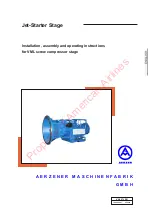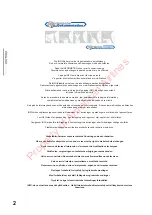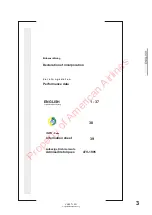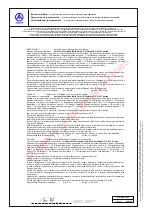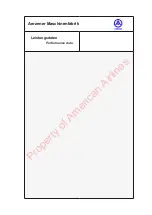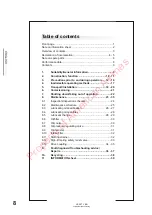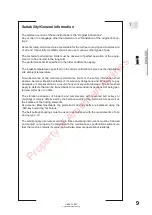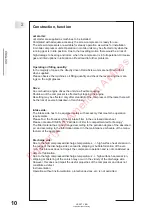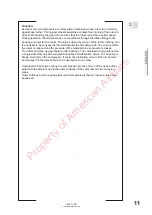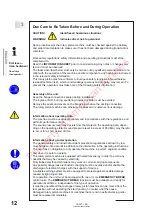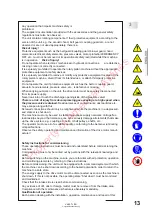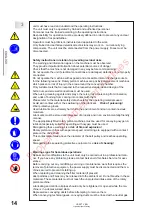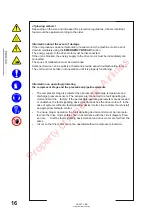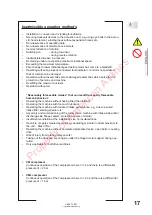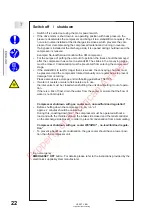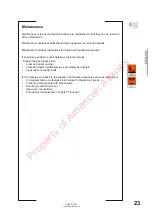
ENGLISH
V4-007 J EN
Originalbetriebsanleitung
15
before disassembly.
Note the oil temperature when changing the oil. The oil temperature must rise above
60°C. If it is above 60°C, there is a
risk of burns!
Personal protective measures
Conveying ducts or components on the discharge side must not be touched without
adequate protection. The ducts and components can reach temperatures in excess of
70°C.
Risk of burns!
If the acoustic hood is open or missing, there is risk of burns when the housing surface
becomes hot as a result of operation.
Protective gloves and clothing must be worn.
Close-fitting clothing is required due to the presence of rotating components.
Risk of injury!
Ear protection must be worn during machine operation.
Information about the installation site
It is the operator‘s responsibility to use and operate the machine in accordance with its
intended use taking into account the local conditions.
The machine must only be operated in a suitable, well-ventilated installation site. The
installation site must be free from excessive dust, acids, steam and explosive or flam
-
mable gases.
The installation site must be arranged to avoid risks as a result of the ambient air, the
medium to be convyed or oxygen deficiency.
The installation site must be arranged so that the commissioning of the rotary piston
machine does not impose a risk of overheating, fire and/or explosion.
The protective equipment provides protection against injury and must not be modified
or bypassed.
When using diesel or petrol drive motors, there is a
risk of poisoning
if there is insuf-
ficient room ventilation. The installation site must be sufficiently ventilated. The motor
manufacturer’s operating instructions must also be observed.
Information on operation with an acoustic hood
The acoustic hood is a structural safety component.
During operation with an acoustic hood, all hood elements are to be closed before
starting operation and are only to be opened after the motor has been shut down and
the fuses removed or switched off.
The acoustic hood prevents the risk of injury from rotating and hot components.
If the acoustic hood is opened while the machine is operating,
there is a risk of injury.
When installing and assembling the unit, no sparks or glowing objects caused by, e.g.
welding or separating, are allowed to enter the foam in the acoustic hood.
Risk of fire!
Risk of glowing embers!
Fire regulations must be adhered to for all “hot work operations” close to the unit.
CAUTION!
When commissioning, sparks, glowing or other fire-causing objects could be taken in
from the intake airflow and, fanned by the acoustic hood ventilator, set the foam alight.
Risk of fire!
No welding or separating is to be done on the acoustic hood as sparks or sputtering
caused by the applied thermal energy could set the foam alight.
Risk of fire! Risk
Property of American Airlines

